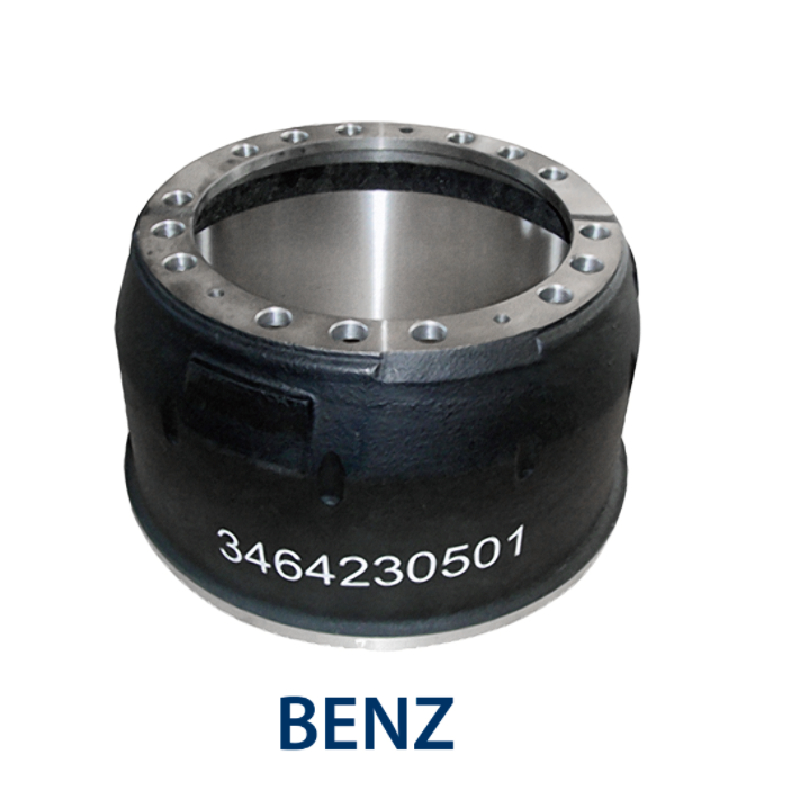Nov . 10, 2024 06:53 Back to list
Composition of Materials Used in Brake Drum Manufacturing and Performance Analysis
Understanding Brake Drum Material Composition
Brake drums play a crucial role in the functioning of a vehicle’s braking system. They work in conjunction with brake shoes, serving to create friction and effectively slow down or stop the vehicle. The performance, durability, and safety of brake drums are heavily influenced by their material composition. In this article, we will explore the various materials used in the construction of brake drums, their properties, and how these materials affect the overall performance of the braking system.
Traditional Materials
Historically, brake drums have been manufactured predominantly from cast iron. This material is favored for its excellent ability to withstand high levels of heat generated during braking. Cast iron offers good friction characteristics, allowing it to perform reliably under strenuous conditions. It can efficiently disperse heat, which helps to prevent brake fade—this is when the brake system loses its effectiveness due to overheating. Furthermore, cast iron is relatively inexpensive and easy to cast into complex shapes, making it a popular choice among manufacturers.
However, traditional cast iron does have its limitations. It can be quite heavy, which adds unnecessary weight to the vehicle. This can impact fuel efficiency and overall vehicle performance, leading to a search for alternative materials.
Advances in Technology Composites and Alloys
With advancements in material science, manufacturers have started to explore alternative materials for brake drums. One such innovation is the development of composite brake drums. These materials typically combine various fibers, such as carbon or Kevlar, with resins to produce lightweight but strong components. Composite brake drums offer significant weight savings over traditional materials, which can enhance vehicle performance by improving acceleration and reducing fuel consumption.
Another promising material is aluminum. Aluminum brake drums are significantly lighter than their cast iron counterparts, providing an excellent strength-to-weight ratio. They also boast superior thermal conductivity, enabling better heat dissipation. However, aluminum drums may not conduct heat as effectively as cast iron at higher temperatures, which can lead to performance issues under prolonged heavy braking. To counteract this, some manufacturers use aluminum alloys, blending aluminum with other metals to enhance strength and heat resistance.
brake drum material composition

Understanding Friction Materials
The material composition of brake drums is not solely about the drum itself. The friction materials used in conjunction with brake drums are equally critical. The brake shoes typically feature various friction materials, including organic compounds, semi-metallic materials, and ceramics. Each of these options has its own advantages—organic materials offer quiet operation and less wear on drums, while semi-metallic materials provide superior stopping power and heat resistance.
Ceramics, known for their durability and ability to withstand high temperatures, are becoming increasingly popular, especially in high-performance applications. The choice of friction material can significantly affect the performance and longevity of both the drum and the overall braking system.
Environmental Impact
As the automotive industry shifts towards sustainability, the environmental impact of brake drum materials is gaining attention. Traditional brake materials can create harmful dust and emissions over time, prompting a move towards eco-friendlier options. Some manufacturers are now focused on developing low-copper or copper-free brake materials, which are less harmful to the environment while still providing optimum performance.
Conclusion
The material composition of brake drums is a critical factor that influences not only the performance and safety of a vehicle’s braking system but also its overall efficiency and environmental impact. From traditional cast iron to modern composites and alloys, each material brings unique advantages and challenges. As automotive technology continues to evolve, we can expect further innovations in brake drum materials that enhance performance, reduce weight, and minimize environmental impact. Understanding these materials and their properties is essential for both manufacturers and consumers, ensuring that vehicles can uphold the highest standards of safety and efficiency on the road.
-
Premium Brake Drum Iveco – Durable Drum Brake Drum & Brake Shoe Solutions
NewsJul.08,2025
-
High-Performance Brake Drum Liza for Enhanced Safety Reliable Drum Brake Drum & Brake Shoe Solutions
NewsJul.08,2025
-
High-Quality Brake Drum MAZ – Durable Drum Brake Drum & Brake Drum and Brake Shoe for Optimal Performance
NewsJul.07,2025
-
High-Quality Brake Drum Kamaz for Reliable Performance Durable Drum Brake Drum & Brake Shoes
NewsJul.07,2025
-
High-Quality Brake Drum Kamaz for Reliable Performance Durable Drum Brake Drum & Brake Shoe Replacement
NewsJul.07,2025
-
Brake Drum Man - High-Quality Drum Brake Drum & Brake Drum and Brake Shoe Solutions
NewsJul.06,2025
